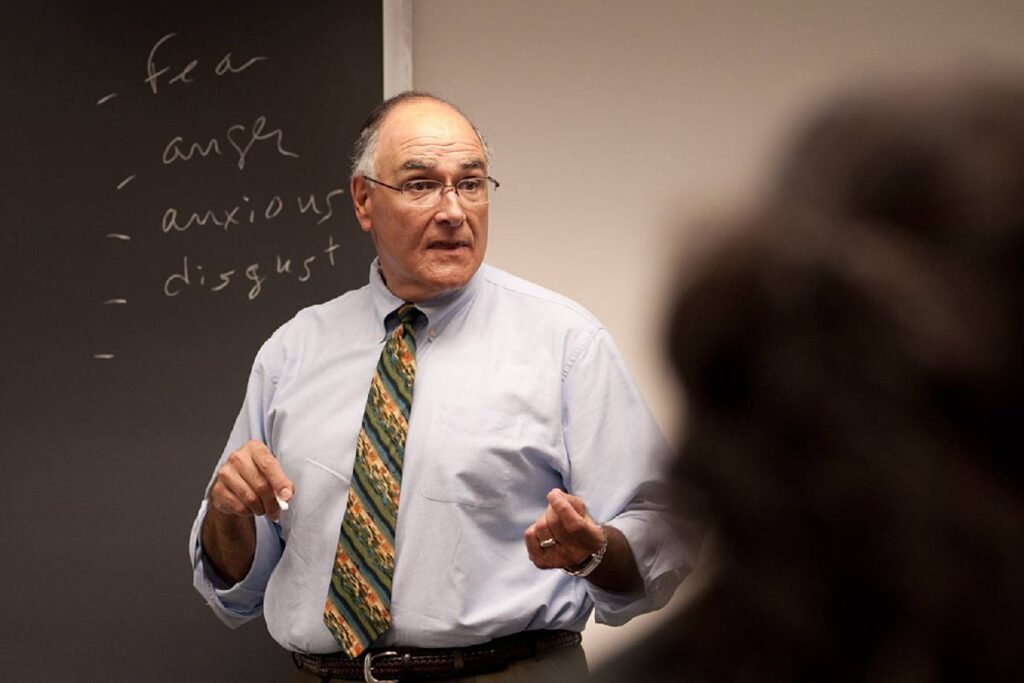Ve aqui e Inscribete a nuestro proximo TOEFL course
TOEFL Speaking Section – Task 4: Integrated Speaking Task (Academic Lecture)
- Objective: This task evaluates your ability to listen to an academic lecture and then summarize the key points effectively. Unlike the previous tasks, Task 4 does not include a reading passage; it solely relies on a listening passage.
- Format:
- Listening Passage: You’ll listen to a portion of a lecture, typically about 2 minutes long. This lecture is usually on an academic subject and can include concepts, theories, or discussions on various topics.
- Your Response: After listening to the lecture, your task is to summarize the main points. This involves identifying the primary topic of the lecture and the key details or examples provided by the speaker.
- Preparation Time: You have 20 seconds to prepare your response after the lecture ends.
- Response Time: You have 60 seconds to speak.
Key Aspects of Task 4:
- Understanding the Lecture: Focus on grasping the overall topic and the main points or arguments presented. Pay attention to examples or explanations that support these points.
- Note-Taking: Efficient and effective note-taking is crucial. Jot down the main ideas and any specific examples or details that are emphasized in the lecture.
- Summarization Skills: Summarize the lecture in a structured way. Clearly state the main topic and then discuss the supporting points or examples.
- Language Use: Your ability to express these ideas clearly and coherently, with correct grammar and pronunciation, is key for a high score.
- No Personal Opinion: Unlike the Independent Speaking tasks, here you should not include your own opinion. Your response should be a straightforward summary of the lecture.
Task 4 is unique in its focus on listening to and summarizing a lecture, which is a common scenario in academic settings. Would you like to try a practice example for this task, or do you have any specific questions or areas you’d like to focus on? use the WhatsApp bubble on the bottom right-hand corner of your screen.
Sample Academic Lecture Script for Task 4: Lecture on Quantum Computing
Lecture 1:
Question: Explain quantum computing as described in the lecture. Discuss how it differs from classical computing and the potential challenges it faces.

Please use audio only you will not have a script in the test. use script only if needed bare in mind that this task is listening only.
Professor Oswald: Today, we’re going to explore the fascinating world of quantum computing. Quantum computers operate on the principles of quantum mechanics, a fundamental theory in physics that describes the nature of matter at the atomic and subatomic levels. Unlike classical computers, which use bits as the basic unit of information represented either as 0 or 1, quantum computers use quantum bits, or qubits. Qubits have the remarkable ability to exist in multiple states simultaneously, thanks to the phenomena known as superposition.
This capability allows quantum computers to process a vast number of calculations at once, making them exponentially more powerful than traditional computers for certain tasks. For example, in solving complex mathematical problems, a quantum computer could find solutions in a fraction of the time it would take a classical computer.
TOEFL Speaking Section Preparation
Another key property of qubits is entanglement. When qubits become entangled, the state of one qubit instantly correlates with the state of another, no matter how far apart they are. This property could revolutionize the field of secure communication.
However, quantum computing also faces significant challenges. One of the biggest is maintaining the stability of qubits. Qubits are extremely sensitive to external disturbances, a problem known as decoherence. To combat this, researchers are exploring various methods, including quantum error correction and developing new materials for building quantum computers.
In summary, quantum computing has the potential to transform technology by solving problems that are currently intractable for classical computers. The field is still in its infancy, but the progress we’ve made so far is promising, paving the way for breakthroughs in computation, cryptography, and beyond.”
Sample Response to Quantum Computing Lecture
TOEFL Speaking Section Preparation
Q: Explain quantum computing as described in the lecture. Discuss how it differs from classical computing and the potential challenges it faces.
TOEFL Speaking Section Preparation
Introduction (10-15 seconds): “The lecture focused on quantum computing, a cutting-edge field in technology. It explored how quantum computers operate differently from classical computers.“
TOEFL Speaking Section Preparation
Summarize Key Points (30-40 seconds): “The lecturer started by explaining that quantum computers use qubits instead of bits, which allows them to exist in multiple states simultaneously due to superposition. This capability enables quantum computers to process many calculations at once, making them much more powerful for certain tasks. The concept of entanglement was also discussed, where the state of one qubit is directly related to another, offering potential advancements in secure communication. However, the lecturer highlighted challenges in quantum computing, such as maintaining the stability of qubits, a problem known as decoherence. Researchers are addressing this through quantum error correction and new materials.”
TOEFL Speaking Section Preparation
Conclusion (10-15 seconds): “In conclusion, the lecture provided an overview of the potential and challenges of quantum computing. It emphasized the transformative impact it could have on fields like computation and cryptography, despite being in the early stages of development.”
Sample Academic Lecture Script: Lecture on Neuroplasticity
Question 2:
Q: Summarize the lecturer’s explanation of neuroplasticity. What are the implications of neuroplasticity for learning and brain injury rehabilitation?

Please use audio only you will not have a script in the test. use script only if needed bare in mind that this task is listening only.
Professor Drew Dickens: Today’s discussion is on neuroplasticity, a revolutionary concept in neuroscience. Neuroplasticity refers to the brain’s ability to change and adapt as a result of experience. This contradicts the old belief that the adult brain is static and unchanging.
One of the key aspects of neuroplasticity is the formation of new neural connections. When we learn something new, our brain physically changes. New connections between neurons are formed, strengthening the neural pathways associated with that learning.
This concept has significant implications for rehabilitation after brain injuries. For example, stroke patients often regain abilities lost due to brain damage through targeted therapies that encourage brain reorganization.
Moreover, neuroplasticity isn’t limited to young brains; it continues throughout life. Activities like learning a new language or playing a musical instrument in adulthood can still lead to profound neural changes.
In summary, neuroplasticity highlights the brain’s remarkable capacity to reorganize and adapt, offering new avenues for understanding learning and recovery from brain injuries.”
Response to Neuroplasticity Lecture
TOEFL Speaking Section Preparation
Q: Summarize the lecturer’s explanation of neuroplasticity. What are the implications of neuroplasticity for learning and brain injury rehabilitation?
Introduction (10-15 seconds): “The lecture discussed neuroplasticity, a key concept in neuroscience that describes how the brain can change and adapt based on experience.”
TOEFL Speaking Section Preparation
Summarize Key Points (30-40 seconds): “The lecturer explained that neuroplasticity involves the formation of new neural connections, especially when learning new things. This results in the brain physically changing and strengthening neural pathways related to that learning. A significant application of this concept is in rehabilitation for brain injury patients, such as stroke survivors, where therapies can help in regaining lost abilities by promoting brain reorganization. The lecturer also emphasized that neuroplasticity occurs throughout life, meaning adults can also experience neural changes through activities like learning new languages or playing instruments.”
TOEFL Speaking Section Preparation
Conclusion (10-15 seconds): “In conclusion, the lecture shed light on the brain’s ability to adapt and reorganize itself, a concept that has profound implications for learning and recovery from brain injuries. It underscores the ongoing potential for change and growth in the human brain, regardless of age.”
TOEFL Speaking Task 4 Response Template
- Introduction (10-15 seconds)
- Begin by briefly stating the main topic of the lecture.
- Example starter: “The lecture was about [main topic], focusing on [key aspect].”
- Summarize Key Points (30-40 seconds)
- Outline the major points or concepts discussed in the lecture.
- Example: “The lecturer explained [first key point], which is [brief explanation]. They also discussed [second key point], highlighting [specific detail or example].”
- Continue with additional key points if necessary: “Additionally, they covered [another key point], mentioning [relevant information].”
- Conclusion (10-15 seconds)
- Conclude by summarizing the importance or implication of the lecture’s content.
- Example closing: “In summary, this lecture gave insights into [topic], showing its importance in [field or application].”
Example Usage of the Template:
Suppose the lecture is about the impact of climate change on ocean currents.
- Introduction: “The lecture was about climate change, focusing on its impact on ocean currents.”
- Summarize Key Points: “The lecturer explained how rising global temperatures are affecting oceanic circulation, which can lead to changes in weather patterns. They also discussed the melting of polar ice caps, highlighting its contribution to sea-level rise and altered salinity levels in the oceans. Additionally, they covered the potential consequences of these changes, mentioning increased extreme weather events and impacts on marine ecosystems.”
- Conclusion: “In summary, this lecture provided valuable insights into how climate change is influencing ocean currents, emphasizing its significant effects on global weather systems and marine life.”
This template can be adapted to various lecture topics, helping you to structure your response effectively. Remember, the key is to capture the essence of the lecture and communicate it clearly. If you have any specific questions or need further examples, feel free to ask
Sample Academic Lecture for practice Script 3: Lecture on Renewable Energy
Q: Summarize the key points from the lecture on renewable energy. What are the different types of renewable energy sources mentioned, and what challenges are associated with them?

Professor Annabell: In today’s lecture, we’ll explore the topic of renewable energy, an increasingly vital field in the face of global energy challenges. Renewable energy comes from natural sources that are constantly replenished, such as sunlight, wind, and water. Unlike fossil fuels, these sources do not deplete over time and emit far fewer greenhouse gases.
One of the most promising forms of renewable energy is solar power. Solar panels capture sunlight and convert it into electricity. This technology has seen rapid advancements, making it more efficient and affordable. Another important source is wind energy, harnessed by wind turbines. Wind farms are becoming a common sight in many parts of the world, providing a significant amount of electricity.
Hydropower, generated by flowing water, is one of the oldest and most established renewable sources. However, it’s not without its environmental impacts, particularly on aquatic ecosystems and local communities.
Finally, there’s the growing field of bioenergy, which involves producing energy from organic materials. While it’s a renewable source, it raises questions about land use and food security.
In conclusion, renewable energy is key to a sustainable future. Each source has its benefits and challenges, and a combination of these technologies will likely be necessary to meet our global energy needs.
Use Template
Q: Summarize the key points from the lecture on renewable energy. What are the different types of renewable energy sources mentioned, and what challenges are associated with them?
- Introduction:
- Summarize Key Points:
- Conclusion:
Sample Academic Lecture For Practice Script 4: Lecture on Behavioral Psychology
Q: Describe the main ideas presented in the lecture about behavioral psychology. Discuss the concepts of conditioning and observational learning as explained by the lecturer.

Professor Annabell: “Today, we delve into behavioral psychology, which focuses on how our environment influences our behavior. This field examines the ways in which external stimuli can shape and modify human actions.
One core concept in behavioral psychology is conditioning. Classical conditioning, first studied by Ivan Pavlov, demonstrates how a neutral stimulus can become associated with a response. Pavlov’s experiment with dogs showed that a neutral stimulus, like a bell, when consistently paired with food, eventually triggered salivation on its own.
Another key aspect is operant conditioning, introduced by B.F. Skinner. This is about learning through consequences. Behaviors followed by positive outcomes are likely to be repeated, while those followed by negative outcomes are not. Skinner’s experiments with animals demonstrated how behavior could be shaped by rewards or punishments.
Behavioral psychology also explores observational learning, where behavior is influenced by watching others. Albert Bandura’s ‘Bobo doll’ experiment highlighted how children imitate aggressive behavior observed in adults.
To summarize, behavioral psychology offers valuable insights into how our environment and experiences shape our actions. Understanding these principles has important implications for fields ranging from education to therapy.”
TOEFL Speaking Section Preparation
Use Template
Question: Describe the main ideas presented in the lecture about behavioral psychology. Discuss the concepts of conditioning and observational learning as explained by the lecturer.
- Introduction:
- Summarize Key Points:
- Conclusion:
Video Available on Page 3

